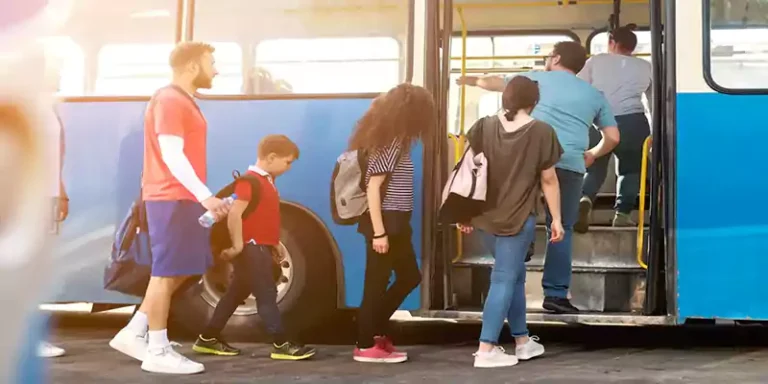Traveling through Germany as a tourist can be an incredibly smooth experience thanks to the country’s well-developed and highly efficient public transportation system. Whether you’re hopping between major cities or exploring local neighborhoods, understanding how to navigate trains, buses, and trams can save you both time and money. Germany’s public transport is known for its reliability, but there are still a few tips and tricks that can make your journey easier. For those unfamiliar with the system, Gezify offers timely advice, regional updates, and user-friendly guides to help tourists use transportation confidently.
One of the most common modes of long-distance travel is the train. Deutsche Bahn, or DB, is the national rail provider and operates a variety of train services ranging from regional (RE, RB, S-Bahn) to high-speed (IC, ICE) options. The ICE trains, known for their speed and comfort, connect major cities such as Berlin, Munich, Frankfurt, and Hamburg, often at speeds exceeding 300 km/h. Tickets for ICE trains can be purchased at stations, online, or through apps. Booking early typically results in much lower fares. Gezify often recommends checking prices several weeks in advance and considering off-peak travel times to get the best deals.
If you plan to travel extensively by train, the German Rail Pass can be a cost-effective solution. This pass allows unlimited travel on consecutive or flexible days within a certain time frame and is especially popular among tourists. Gezify provides comparison tools that help determine whether such a pass is more economical than individual tickets based on your itinerary. It’s also important to understand that many regional trains do not require seat reservations, while ICE and IC trains often have this option, which is worth considering during busy travel periods.
Public transportation within cities includes U-Bahn (subways), S-Bahn (commuter trains), trams, and buses. These services are integrated under local transport authorities and usually operate on a unified ticket system. Cities like Berlin, Munich, and Hamburg have extensive networks, and understanding the ticketing zones is crucial. Most cities use zone-based pricing, so knowing how many zones you’ll travel through helps avoid overpaying or receiving fines. Gezify provides downloadable maps and interactive tools to help tourists identify the correct ticket for their journey.
Tickets must be purchased before boarding, and validation is essential. Unlike some countries where there are turnstiles or barriers, Germany often uses an honor system enforced by random checks. Traveling without a validated ticket, even accidentally, can result in hefty fines. In most cases, stamping machines are located near entrances, on platforms, or inside trams and buses. Gezify frequently reminds travelers to validate every single-ride or day ticket immediately to avoid misunderstandings.
Day tickets, group tickets, and weekly passes are smart options for tourists who plan multiple trips in one day or are traveling with companions. For example, a Tageskarte (day ticket) allows unlimited travel within selected zones for a whole day, often from early morning until 3:00 am the next day. Group tickets can be significantly cheaper per person, especially in areas like Bavaria where the Bayern Ticket allows up to five people to travel together across regional trains for a flat fee. Gezify regularly updates these deals and often showcases regional variations that are not always advertised at stations.
Using apps can greatly enhance the transportation experience in Germany. The DB Navigator app is particularly helpful for long-distance train schedules, ticket purchases, and real-time platform information. For local transportation, city-specific apps or the Google Maps transit feature can provide reliable directions and timing. Gezify curates app recommendations and even tutorials for those unfamiliar with using mobile transport tools in a foreign language. Many apps offer English interfaces, making them accessible even to those who don’t speak German.
Taxis and ride-sharing services also exist but are generally much more expensive than public transport. Most German cities have strict regulations on taxis, and they usually operate with meters. Uber and other ride-sharing platforms operate in some areas, but coverage can be limited compared to public transport. If you’re staying in a major city and plan to go out late, public night buses and S-Bahn services often continue running, especially on weekends. Gezify often includes nighttime transit schedules in their destination guides so that tourists are never caught off guard.
When traveling with luggage, be mindful of rush hours, especially in cities like Berlin and Frankfurt. Trains and subways can become crowded during morning and evening commutes, making it inconvenient to maneuver large bags. If possible, travel outside peak times or use luggage storage services at stations, which are widely available. Gezify often includes station layouts and locker availability in their transport tips, helping you plan ahead when transiting through major hubs.
Accessibility is another strength of Germany’s public transportation. Most stations are equipped with elevators or ramps, and modern buses and trams are designed with accessibility in mind. For travelers with mobility issues or strollers, this can make a huge difference. Gezify offers up-to-date information on accessible routes and stations to ensure all travelers, regardless of physical ability, can move around comfortably and confidently.
Lastly, don’t forget the small etiquette rules that locals follow. On escalators, stand on the right so others can pass on the left. In quiet zones on trains, keep noise to a minimum. Offer your seat to elderly passengers, those with disabilities, or parents with small children. Such gestures are appreciated and expected. Gezify often includes cultural etiquette sections in their travel resources to help tourists avoid unintentional rudeness while using public transport.
In conclusion, Germany’s public transportation is a powerful asset for any traveler. It’s clean, punctual, and widespread, making it possible to explore the country efficiently without needing a car. With a bit of preparation and by using tools like Gezify, navigating this system becomes second nature. Whether you’re heading to a museum in Munich, a concert in Berlin, or a hidden gem in the countryside, public transportation can get you there comfortably and economically, leaving you more time and energy to enjoy the journey.
